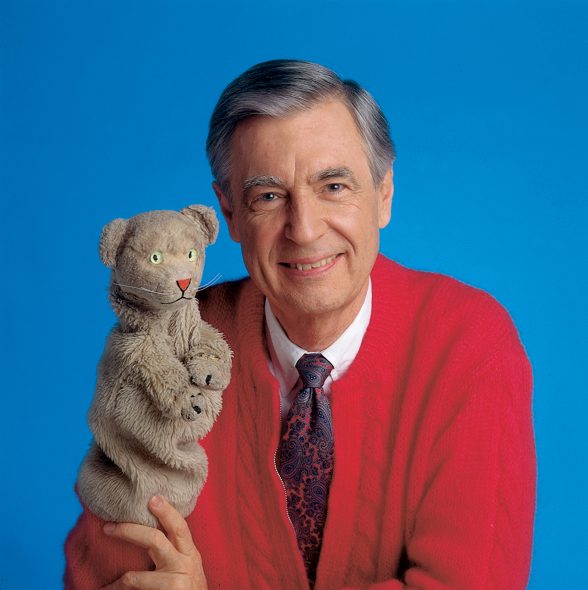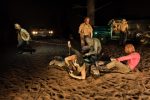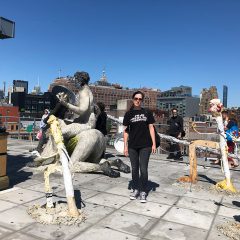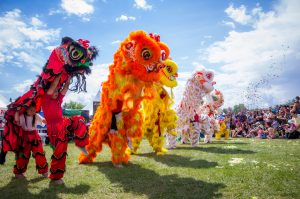
Andrew asks…
Can creativity be learned, or is it an innate quality that one is born with?
Hi, Andrew. *eye roll* Creativity is innate…in childhood. Everyone is born creative.*eye roll* It’s all too corny for me. You see that image up there with Mr. Rogers and Daniel Tiger? [Meme] Imagine Mr. Rogers is you and Daniel Striped Tiger is your childhood memory. Now Mr. Rogers’ arm is your arm now reaching into Daniel Striped Tiger…[end Meme] I hope you see where I’m going here with connecting to your childhood thus bringing imagination to life – to create something. I can’t meme this. You should watch some videos of Mr. Rogers and Daniel cause it’s actually really f*cking strange, in a good way.
Carl Jung and re-connecting with your childhood imagination
Let me try to make this less corny.
Acknowledging becoming an adult means knowing that you have lost the pure creativity instilled through seeing things for the first time. Furthermore, knowing we will never again fully enjoy the company of imaginary friend. While we will never again experience the brightness of color as we did at the age of 6 (wow being an adult sucks) – we can still reconnect to our innate creative self. I’d like to use psychologist Carl Jung efforts in re-examining his imaginative self as an example. Jung set to writing the mythic “Red Book”, a journal, aimed at reaching an unconscious imaginative state while in a conscious boring state using parchment paper and different colored inks. Sound familiar? It’s called “coloring”. At the time Jung was writing this book some critics, without imagination no doubt, called it a psychotic break.
You should know that I’ve decided, in Jungian fashion, to only reference known truths of what I have read instead of fact checking myself for the duration of this article. This is all remembered knowledge inspired by your question. It’s like the 90’s, before Google.
In “Memories, Dreams Reflections” Carl Jung set out to write a collection of childhood memories – a memoir. In order to learn again, to truly remember as an adult, the imaginative, creative self, the child self, Jung recalled games he played as a child and then in practice, played those games on a daily basis. He recorded his meditative state while playing these games and began to reconstruct the memory of his childhood self. One of these games was finding rocks on the beach and recognizing faces, animals, or objects within the individual rocks. A game all children play intuitively. Connecting with a game that collectively children are naturally inclined to play, we are connecting to something innate in being human, that is finding patterns in the natural world. And also our collective unconscious – I have to say that.
Jung recognized that being disconnected from his childhood self was being disconnected from his truest creative consciousness, his imagination. He then gave himself actions from childhood that in theory would reconnect. And he did reconnect. Did you know Jung believed in ghosts?
Artists are inherently connected to their childhoods
Essentially, artists are well practiced at this considering, well, our practice. We never stopped being childlike. With your question on my mind, I recently saw a tweet from a comic artist Mari Naomi “Let’s please banish the idea that if an artist isn’t constantly creating, they are no longer an Artist.” (who goes on to elaborate this specific tweet) but my gut reaction to this was NO. An artist IS a Creator. If you disconnect with creating something, anything, you are not an artist. Not to say that you cannot come back to art, but to be creative, to be creating, requires being connected to creation. Because creativity is not innate in adults. Sure, sometimes destruction is creation. We all have writer’s block. I consider those moments being an artist. But if you are not recognizing the destruction, the writer’s block, the moment of repose, the psychotic break than you just lying fallow and at risk of losing your innate (from childhood) creativity. An artist is constantly creating and recognizing the creation in everything. I know, corny.
Not everything an artist makes is art
I want to argue further just for the hell of it – that this does not make artists creative gods. There is the word “constant” there in Mari’s tweet that I’m interested in as it connotes time. Creativity as we have established is from a point of time, our childhood, it is ephemeral in itself. That is why art is so special – no not like your child (pfft) – art is more important than an actual human=bag of trash (don’t sue me) in the sense that it captures a moment. So, while I’m not behind the idea of “banishing the idea that if an artist isn’t constantly creating, they are no longer an Artist” – I am behind the idea that when constantly creating, the artist isn’t always making Art.
Side note: I’m probably remembering and thus referencing John Berger’s “Ways of Seeing”.
Best,
Beth, F*ck Grammar
Ask Artblog is the essential advice column for all your art life questions. Beth Heinly and Dave Kyu, our Advisors-In-Chief, offer solid advice from life experience and mature opinions on issues. Have a question for Dave or Beth? Email ask@theartblog.org. Or click here to submit a Google form with your questions. All names kept anonymous.









